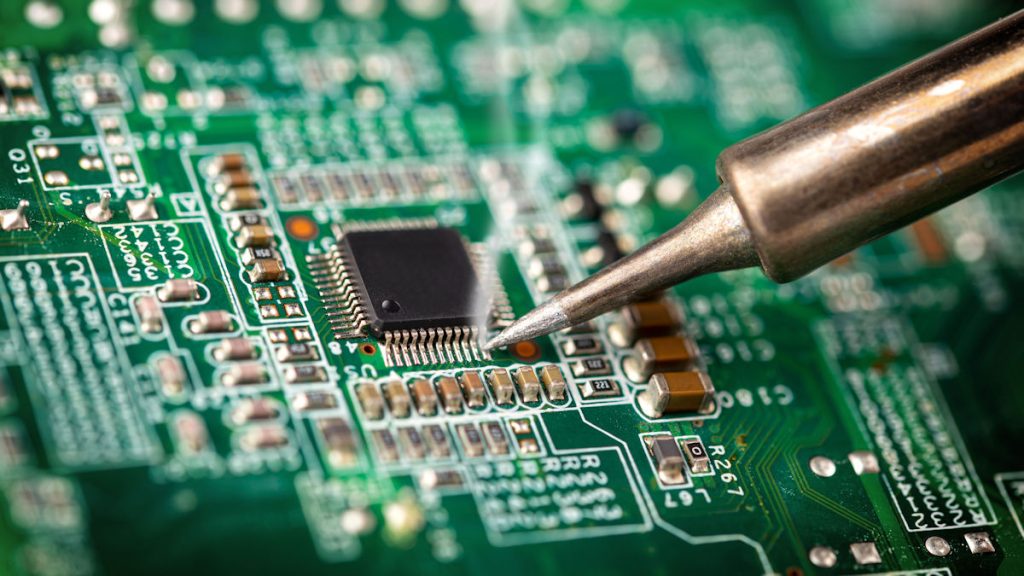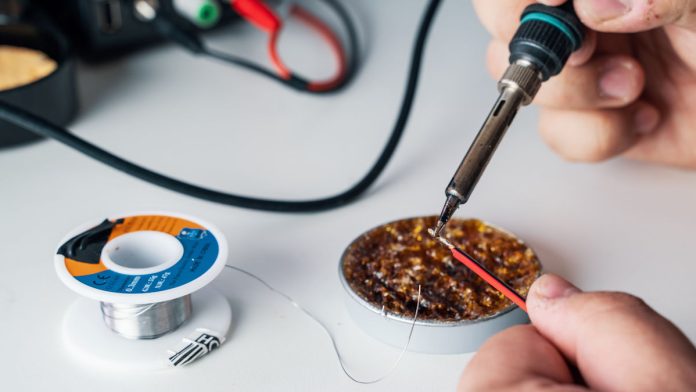Soldering For Beginners Hints & Tips.
Soldering For Beginners – Soldering is a skill every installer should develop as a great way to connect wires, including wires of different sizes and types, in environments where there is very little flexing and vibration, and no pressure. A particular advantage of soldered connections is that it creates no microfractures in wires being joined.
Soldering For Beginners-Soldering is a procedure and there are simple principles you should follow. Wipe the bit end and the iron with a damp cloth. During the process, use the damp cloth to keep the bit end tidy. For the best conduction you want to tin the working end of the bit.
Get a small glob of solder and apply it to the flat bit end then wipe with the damp cloth so the bit is tinned. If you’re making a connection, apply another small glob of solder to the iron and apply the tip to the point where both sides of the join are in contact with the iron.
Soldering For Beginners
Bear in mind that it’s the molten solder on the tip of the iron that lets heat flow quickly from the iron into both parts of the joint. If your iron has the right amount of solder on it and is positioned correctly, the 2 parts to be joined will reach the solder’s melting temperature in a couple of seconds. Let’s go back to where you are applying the end of the solder to the point where both parts of the joint and the soldering iron are all touching one another.
At this moment the solder will melt immediately and flow around all the parts that are at, or over, the melting temperature. After a few seconds of contact you need to remove the iron from the join. Make sure that no parts of the join move after the soldering iron is removed until the solder is completely hard. This can take quite a few seconds with large join.
Soldering For Beginners Hints & Tips
If the join is disturbed during this cooling period, it will be weakened. In a properly made join, the solder will bond the components and/or connected wires – the solder forms a molecular bond with the surfaces of the joint – it’s a cleaner electrical path than a butt connector built using pressure.
When you’re de-soldering a joint make sure you employ a capable solder sucker. The last thing you want is stray solder getting onto circuit boards or dribbling across terminations and connections underneath the spot you’re working. It’s possible to annihilate a board when de-soldering carelessly. When choosing a solder sucker consider that you need a device you can operate with one hand – you’ll need the other hand to operate the iron.
What’s especially tough about de-soldering is that a loss of concentration at the wrong moment and you’ll miss the boat. As the surface of the solder starts to swim, get ready to clean up with that sucker.
Smart installers will position some sort of spill tray under the work area. You can use cardboard, or a small ceramic or timber bowl. We’ve seen techs using a damp cloth or some aluminium foil but make sure you’re not setting the system up for future corrosion or a damaging short.
Finally, it’s always easier to solder on a bench using brackets and a proper working surface during pre-commissioning than to do it in the field. You can find out more about soldering here or read more SEN news here.
Soldering For Beginners Tips
- Avoid too much heat
- Work fast – the process should take only 2-3 seconds
- A dry join is a poorly soldered join
- The join should be smooth and shiny
- If the join is dull and crinkly, you moved it during the solder process
- If you are slow with the work, it will have solder spikes
- At all times the shape of the wire should be visible through the solder
- Soldered joins should be easily removable. This means a minimum of wrapping
- Do not carry solder on the bit to the joint. The smoke you’ll see is evaporating flux, which should normally clean the joint
- Re-flow soldering is tinning 2 pieces of wire separately and then reheating to join them together. This technique can be useful in tight spaces
- Steady the components/wires by clamping them or taping them down and prop yourself firmly using one hand while holding the iron like a pen
- Use of a lighted magnifying glass to highlight the work makes soldering easier once you get used to the different perspective.
“Soldering For Beginners Hints & Tips.”













Hi John,
Having learnt how to solder in High School and then in Technical School and being in the Industry for 20+ years, I think the art of soldering is dying art form. We live in a throw-away society. If something is faulty or not working correctly, we just replace it. The thrill of when you have an electronic piece of equipment, have the knowledge to trace back to certain faulty components, replace them and eventually get that item working.
Watching kids come into the industry would not understand this today. Having worked on repairing CCTV Analogue Cameras, PTZs, Timelapse VCRs, Monitors, Video Matrix Systems, etc. and repairing these items was such good times.
Perhaps there are still some people out there that might be still soldering and repairing faulty items however, unfortunately the world we live in today is so different to what it was when I first started in this industry.
Great article as always
Thanks,
Ivan.